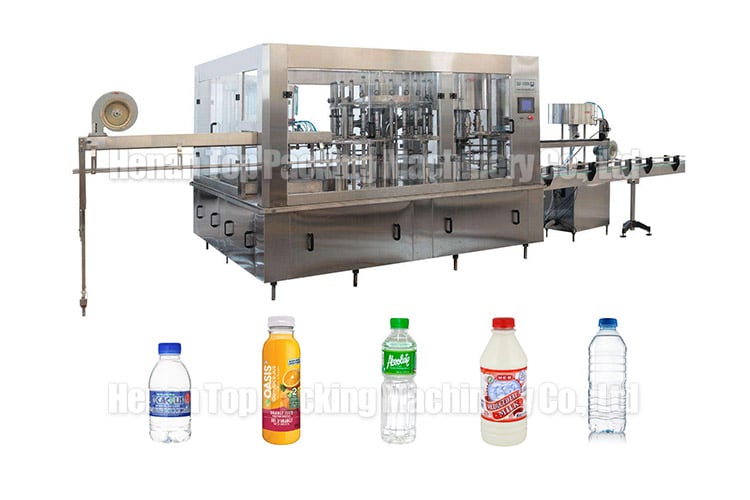In the modern manufacturing industry, automatic filling machine plays a pivotal role in streamlining the process of filling containers with liquids, powders, or granules. These sophisticated machines offer speed, accuracy, and efficiency, revolutionizing production lines across various sectors. In this article, we delve into the inner workings of an automatic filling machine, shedding light on the key components and processes involved.

Container Placement and Handling
The first step in the operation of an automatic filling machine is the placement and handling of containers. Empty containers, such as bottles or cans, are loaded onto the machine’s conveyor system or positioned using automated mechanisms. This ensures a continuous supply of containers for filling.
Product Supply and Control
Automatic filling machines are equipped with reservoirs or hoppers that store the product to be filled. These reservoirs can hold liquids, powders, or granules depending on the application. The machine ensures a steady supply of the product to the filling station, maintaining the desired flow rate and consistency.
Filling Mechanism
The filling mechanism is a crucial component of an automatic filling machine, designed to precisely dispense the product into the containers. Different types of filling mechanisms are used based on the nature of the product:
a. Liquid Filling: For liquids, the machine may employ valves, pumps, or nozzles to control the flow. The containers are positioned beneath the nozzles, and the filling mechanism dispenses the liquid in precise volumes. Sensors or timers may be used to regulate the filling level, ensuring consistency.
b. Powder or Granule Filling: When it comes to powders or granules, the filling machine may utilize augers, screw feeders, or vibratory feeders. These mechanisms accurately measure and dispense the desired quantity of the product into each container, maintaining precise dosing.
Sealing or Capping
After the containers are filled, an automatic filling machine may incorporate sealing or capping mechanisms to secure the contents. This step involves placing caps, lids, or seals on the containers to maintain product integrity. The sealing or capping mechanism can vary depending on the container type and closure used.
Quality Control and Inspection
To ensure product quality and integrity, some automatic filling machines integrate quality control measures into their operations. This may involve inspection systems equipped with sensors or cameras to verify filling levels, detect anomalies, or monitor labeling accuracy. Any containers that do not meet the specified criteria can be rejected or flagged for further investigation.
Conveyor System
Throughout the filling process, an automatic filling machine utilizes a conveyor system to transport the containers from one station to another. The conveyor system ensures a continuous flow, smoothly moving the containers between filling, sealing, and inspection stations. It may employ belts, rollers, or other mechanisms to facilitate efficient movement.
Control and Monitoring
Automatic filling machines are equipped with advanced control panels and electronic systems. These allow operators to set parameters, adjust settings, and monitor the machine’s performance. Operators can ensure precise control over filling volumes, speed, and other critical parameters. Real-time monitoring helps identify any deviations or issues, enabling prompt adjustments or interventions.
Summary
The automatic filling machine has revolutionized the manufacturing industry by streamlining the process of filling containers with liquids, powders, or granules. Through precise mechanisms, automated controls, and integrated inspection systems, these machines offer speed, accuracy, and efficiency. By understanding the inner workings of automatic filling machines, manufacturers can optimize their production lines, enhance product quality, and meet the growing demands of today’s market.
Henan Top Packing Machinery Co., Ltd is a leading packing and filling machinery supplier. We provide a full range of filling machines to meet the different requirements of customers. If you have any questions, feel free to contact us for a quick answer.
